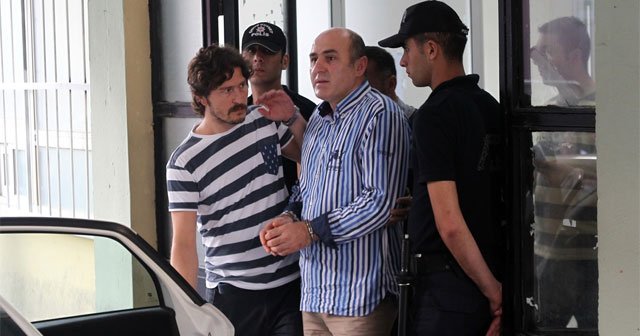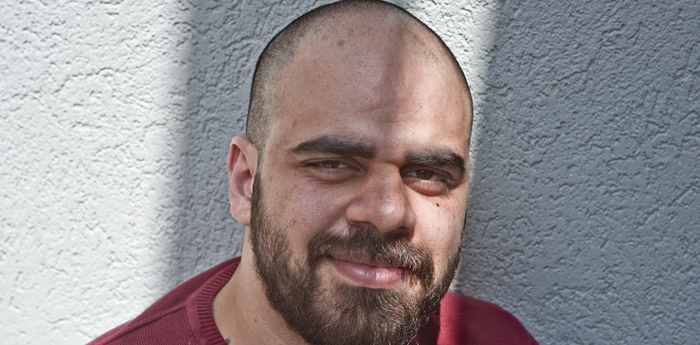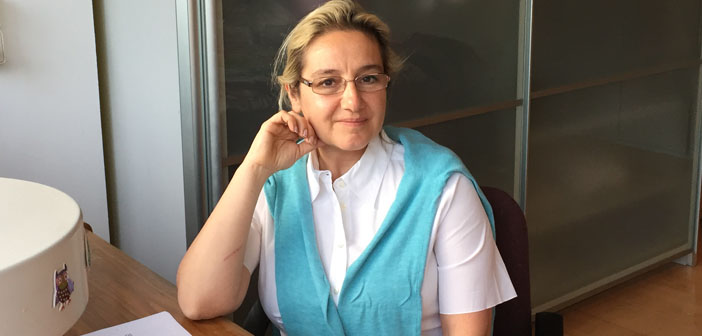Filming has begun on "Çatlı," a film about the life of Abdullah Çatlı directed by Onur Tan. It has emerged that Armenian actors from Türkiye were approached to play the role of an "ASALA militant" in the film, but the actors rejected the offer.
On November 3, 1996, a moving vehicle in Susurluk crashed into a truck exiting a gas station. Former Deputy Police Chief Hüseyin Kocadağ, Gonca Us, and Mehmet Özbay, who were in the car, died at the scene. Sedat Bucak, a member of parliament from the True Path Party representing Şanlıurfa at the time, survived with injuries. Immediately after the incident, it was discovered that the person carrying the identity of Mehmet Özbay was actually Abdullah Çatlı, who was wanted by Interpol for numerous crimes. This revelation transformed what appeared to be a simple traffic accident into something far more significant. Çatlı was a figure linked to a series of dark incidents, particularly in the 1970s. He was wanted in connection with the assassination of journalist Abdi İpekçi on February 1, 1979, the escape of Mehmet Ali Ağca (the perpetrator of the attempted assassination of Pope John Paul II) from Maltepe Prison, the killing of Associate Professor Bedrettin Cömert on July 11, 1978, and the murders of seven Turkish Workers' Party members in Ankara in 1978, known in history as the "Bahçelievler Massacre."
The crash deeply shook Turkish politics. When it became clear that a wanted criminal, a member of parliament, and a police chief were in the same car, and weapons were found in the vehicle, citizens launched the "One Minute of Darkness for Constant Light" campaign, and the Turkish Grand National Assembly (TBMM) established the Susurluk Investigation Commission.
The investigations indicated that Interior Minister Mehmet Ağar was at the center of these complex relationships. Ağar resigned from his position shortly after the crash. On January 16, 1997, Ağar answered questions at the Susurluk Commission in the TBMM. He declined to answer some critical questions, stating they had been referred to the judiciary. He claimed not to remember certain matters. However, over the years, Çatlı has been glorified and turned into a symbolic figure, especially in nationalist circles.
Filming has begun
Today, filming has begun on "Çatlı," a film that will tell the story of Abdullah Çatlı's life. The film is directed by Onur Tan, with former footballer Vedat İnceefe playing Çatlı. Çatlı's daughters, Gökçen and Selcen Çatlı, also provided assistance during the screenplay writing phase. News of the Çatlı film's production recently resonated within the Armenian community of Türkiye. The reason for the reaction was that the producers were searching for an Armenian actor to play the role of an "ASALA militant" in the film and had approached several Armenian actors with the offer.
Search for Armenian actor to play ASALA role finds no takers
Casting agencies that contacted Armenian actors told some "we need an Armenian character," while telling others "we need a character who is an organization member." However, when the actors researched the offer a bit, they learned that the role involved portraying an ASALA militant. According to the information we obtained, none of the actors from Türkiye's Armenian community accepted this offer. We also learned that after the actors rejected the offer, they were asked whether they could serve as consultants to help whoever would eventually play the character. This offer was also rejected among Armenian actors from Türkiye.
The film, currently being shot in Hungary, is expected to be released in the first half of 2026.
The "suspicious" connection between Çatlı and ASALA
Çatlı is known as one of the most controversial and murky figures in Türkiye's recent history. In the 1970s, he was part of the nationalist movement and rapidly rose through the ranks of the Grey Wolves (Ülkü Ocakları), the youth organization of the Nationalist Movement Party (MHP). During this period, he was associated with various political murders and attacks. He was particularly accused of being an instigator in the Bahçelievler Massacre case, in which seven members of the Turkish Workers' Party were killed in 1978. His name also came up in investigations related to armed actions, illegal possession of weapons, and smuggling before 1980.
After a warrant was issued for his arrest following the September 12, 1980 military coup, he fled abroad. During his years in Europe, he traveled with fake identities and was associated with allegations of drug trafficking, assassination plots, and connections to illegal organizations. In 1984, he was arrested in Switzerland and received a 7-year prison sentence shortly after the attack that caused minor damage to the Armenian Genocide memorial in the town of Alfortville, France, traveling under the alias Hasan Kurtoğlu. He escaped after a short time in prison.
He returned to Türkiye in the 1990s, and according to information leaked to the press after the Susurluk Scandal, he participated in unofficial state operations.
Following the Susurluk Scandal, nationalist circles in particular began to portray Çatlı as the person who "destroyed" ASALA, the organization that carried out attacks on Turkish diplomats in the 1970s and 80s. However, these claims are considered highly dubious by state officials who closely followed that period. Mehmet Eymür, former head of the MIT (Turkish National Intelligence Organization) Counter-Terrorism Department, addressed questions on this topic in an interview with Gökçer Tahincioğlu from T24 in 2021. The relevant section reads:
What was the relationship between Abdullah Çatlı and Mehmet Ağar? Didn't [Prime Minister] Çiller know about this relationship, that Çatlı was being used in these operations while he was wanted?
Çiller probably knew. I also had an argument with Çatlı. Someone brought him to a restaurant in Bebek. I said, "You're involved in drug dealing." They were living abroad at the time. He said, "Well, we had to, should we have starved?" I said, "Couldn't you do something else?" We had an argument.
Who was Çatlı at that time, what was his status, that he could meet with you...
They were using them. The Bahçelievler Massacre was not a murder in which the state had a hand. They were already involved in all kinds of dirty business anyway. People like Nuri Gündeş [former MIT Regional Director] used them. Of course, someone used them. They didn't accomplish anything either. The stories about destroying ASALA are nonsense, lies. They planted a bomb at a monument in a cemetery in France. There's nothing else they did.
Why would the state need this?
Çatlı could certainly be used, but it matters who used whom. You need to pay attention to that. I think they chose the wrong people.
Did Çatlı destroy ASALA?
Veteran journalist Murat Yetkin, who has written works such as "The Middle East Book for the Curious" and "The Coups Book for the Curious," published an article titled "The ASALA claim that hasn't ended for forty years and the ASALA reality" on his website "Yetkin Report" on November 28, 2020. In his article, Yetkin presented the following findings:
"With the end of the Lebanese civil war and Haddad's death from blood cancer (presumably as a result of poisoning by MOSSAD) in East Germany in 1978, ASALA's connection with Moscow was severed. Now its main support came from radical groups within the Armenian diaspora in the US and France, which wanted harsher actions against Türkiye—which itself was drifting toward civil war in the late 1970s.
The turning point for ASALA was July 15, 1983, when they attacked the Turkish Airlines counter at Paris's Orly Airport, killing 8 people and injuring 55. The bomb was manufactured in the home of Turkish citizen Ohannes Semerci by another Turkish citizen, Nayır Soner, and planted by Syrian citizen Varujan Karabetyan. The French state, which had turned a blind eye to ASALA actions until then, cut off support when terrorism spilled onto its own soil, and declared ASALA a terrorist organization.
The Orly action split ASALA. While Ara Toranyan from the Armenian diaspora in France now wanted these actions to stop, the Agopyan and Monte Melkonyan teams were in favor of increasing the actions.
ASALA's actual dissolution would be triggered by the killing of its founder, Agopyan, in Athens on April 28, 1988.
The claim that Çatlı killed Agopyan has been told like a heroic epic in nationalist circles from that time to the present and is also accepted in other circles.
At the time Agopyan was killed, Çatlı was serving time in a French prison, convicted of drug trafficking. In 1984, shortly after the attack that caused minor damage to the Armenian Genocide memorial in the town of Alfortville, France, he was arrested under the fake identity of Hasan Kurtoğlu and received a 7-year prison sentence. In other words, Çatlı could not have been in Athens when Agopyan was killed.
So if not Çatlı, was it Alaattin Çakıcı, Oral Çelik who participated in the assassination attempt on Pope John Paul II with Mehmet Ali Ağca, Musa Serdar Çelebi who was one of the leaders of the nationalist organization in Germany, or someone from their teams?
Or, as some Israeli sources claimed, did MOSSAD kill him because of his role in the 1972 Munich Massacre?
No. Agopyan was killed by one of his own guards; he was an agent of Ara Toranyan. As detailed in 'My Brother's Road,' a book written years later by Markar Melkonyan, Monte Melkonyan's brother, Agopyan was killed by the Toranyan faction as a result of an internal struggle within the ASALA organization."





